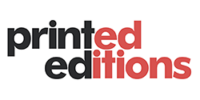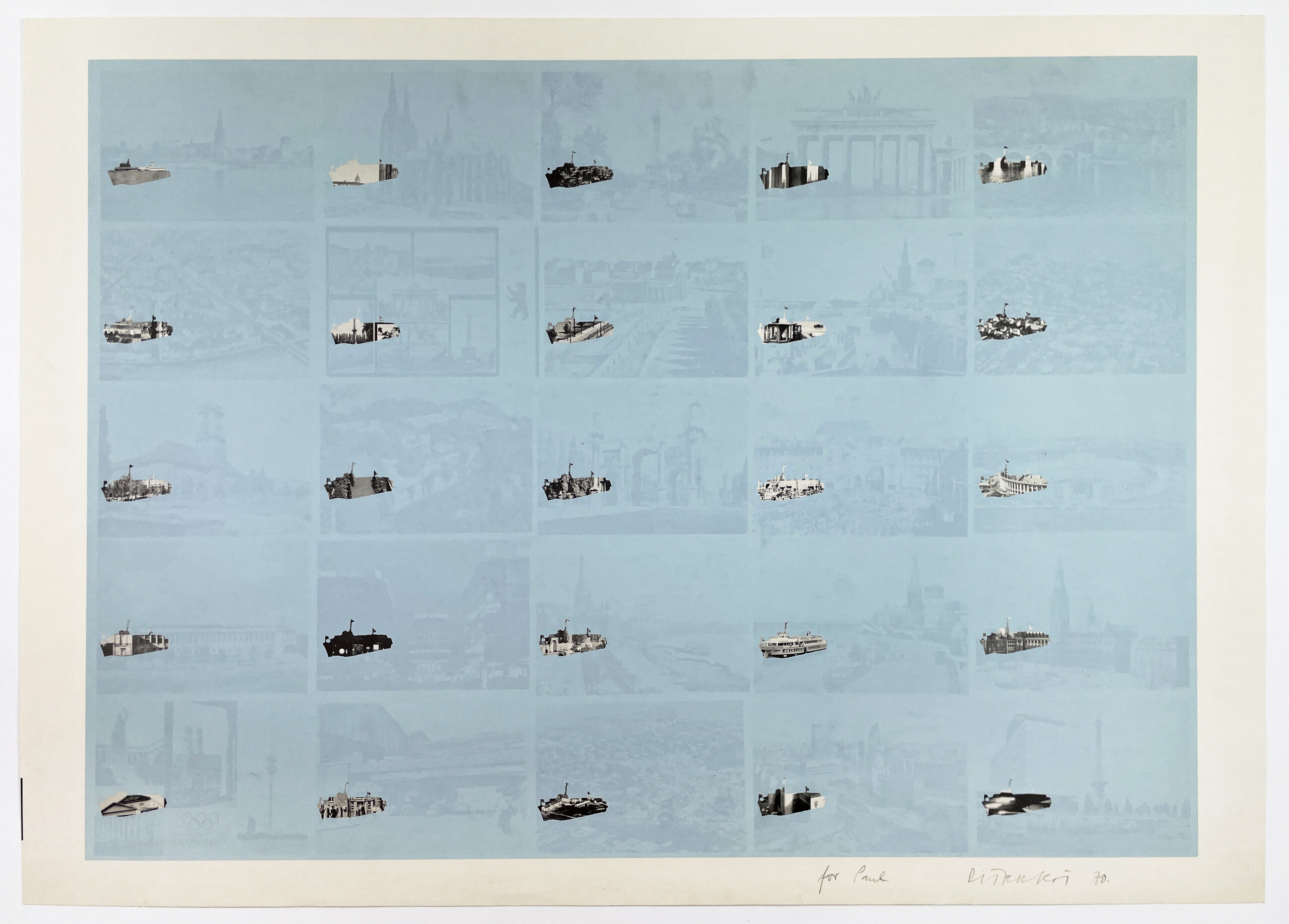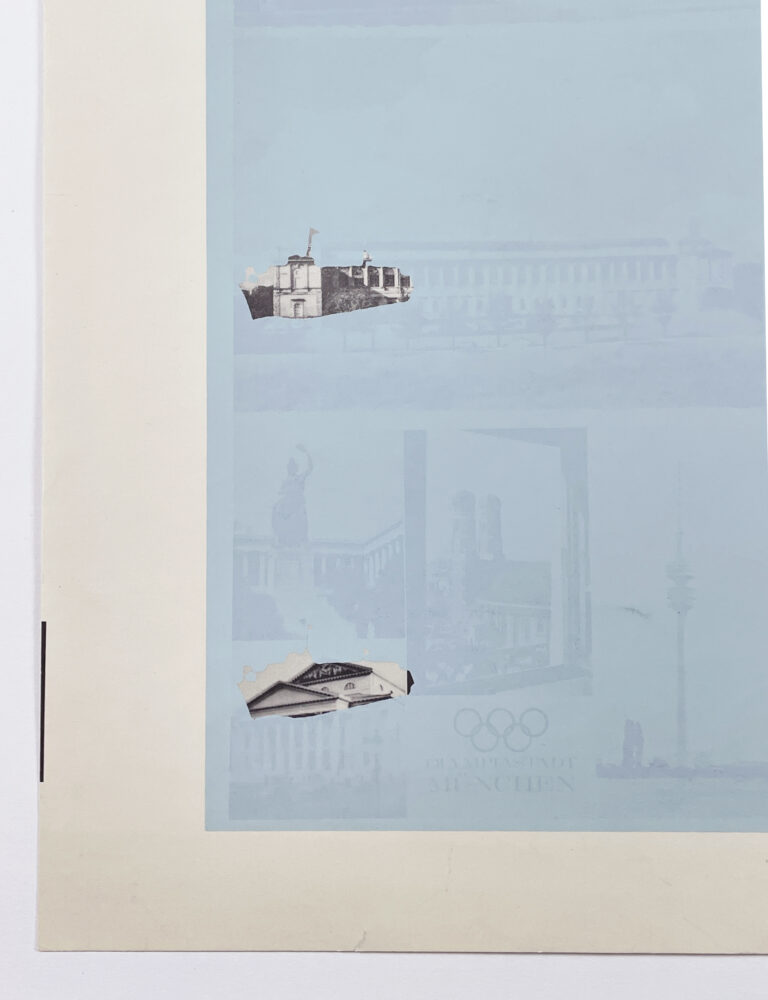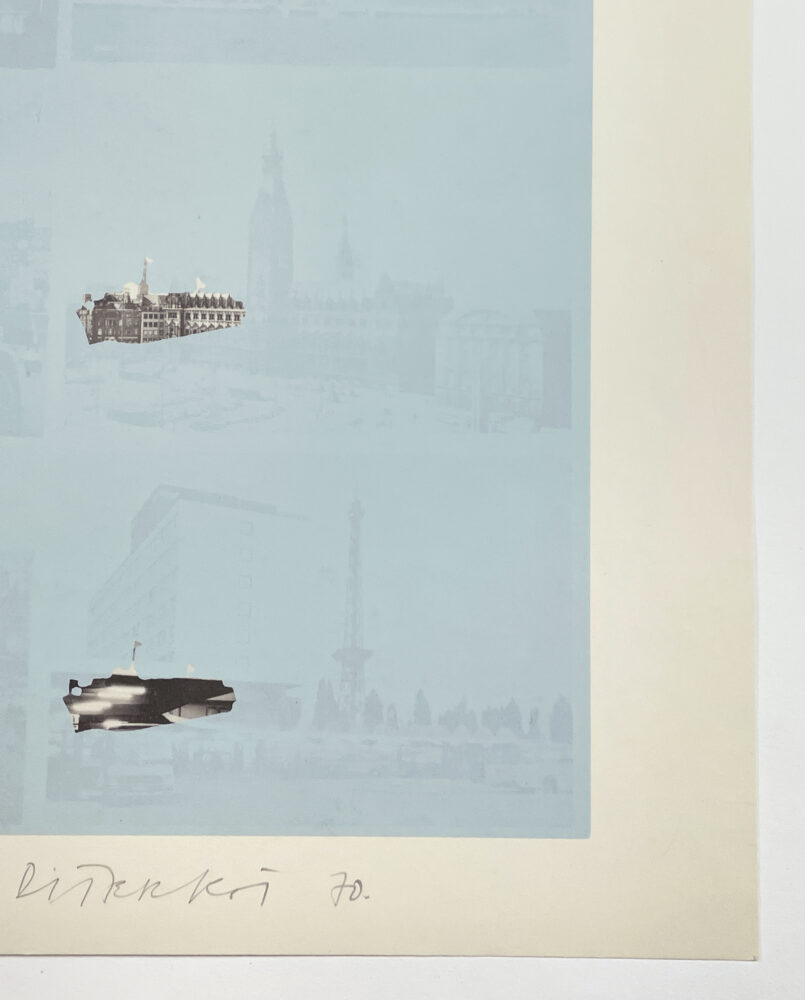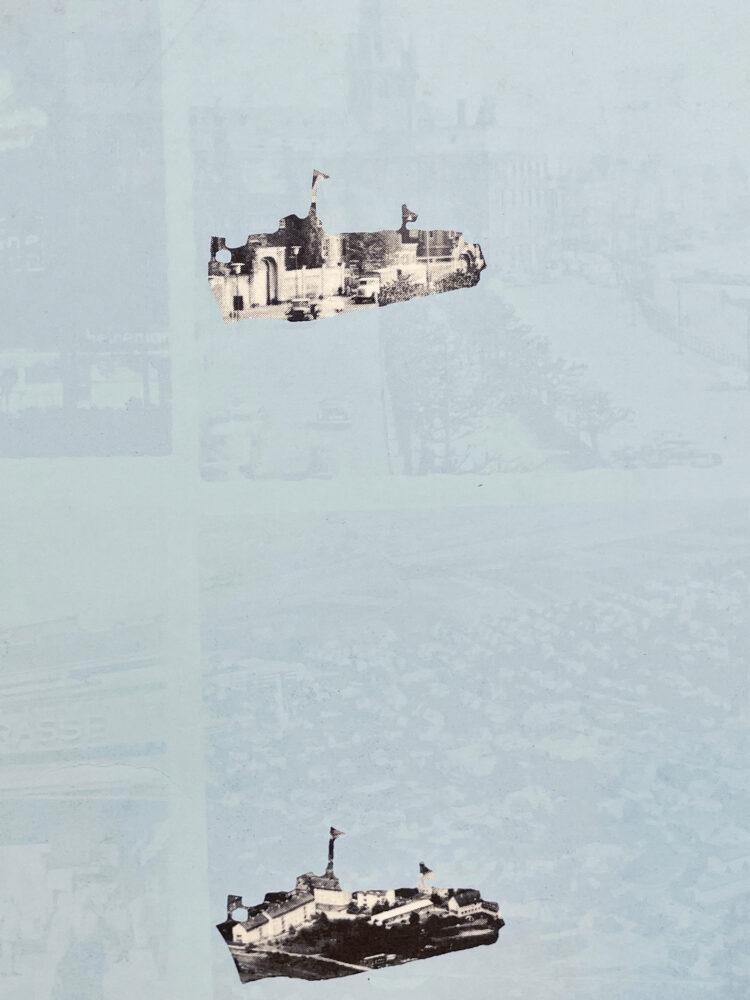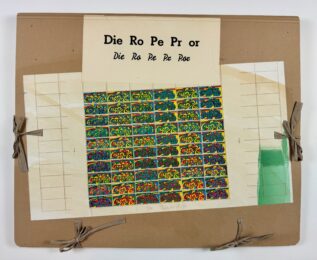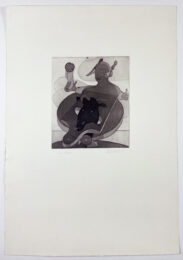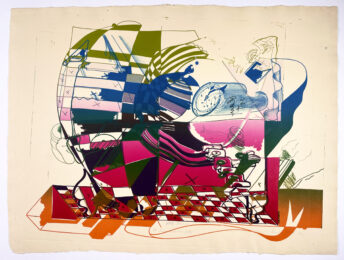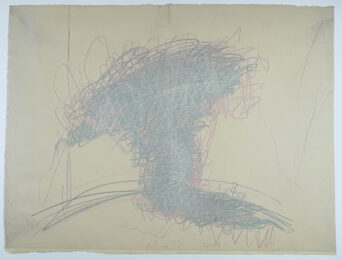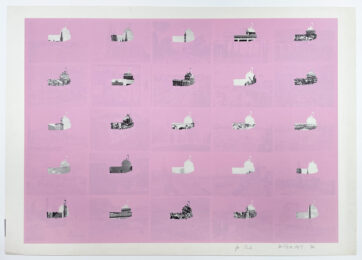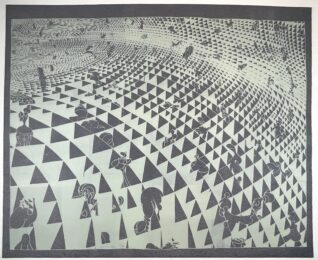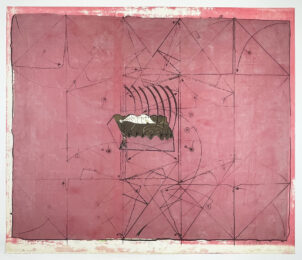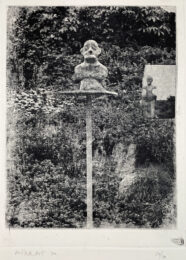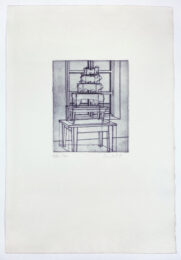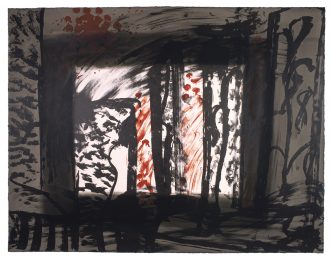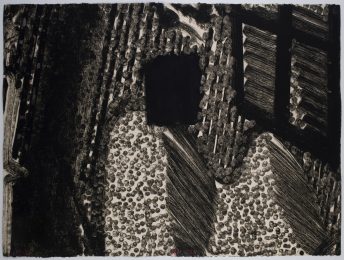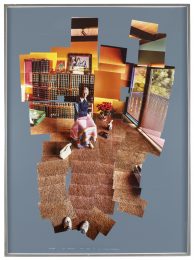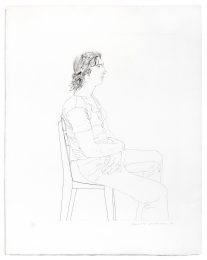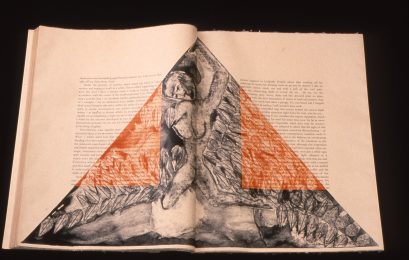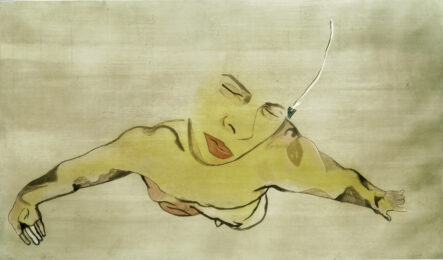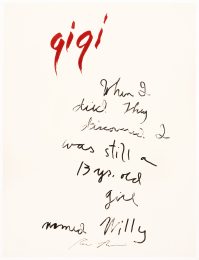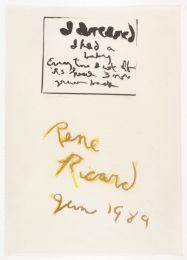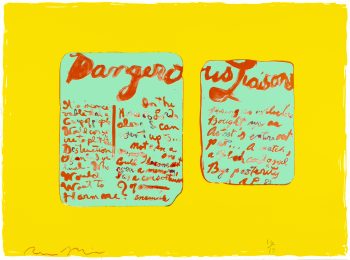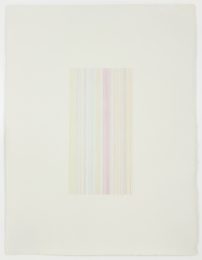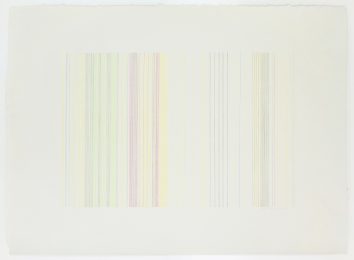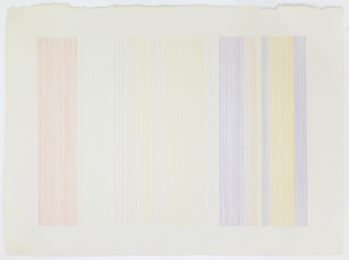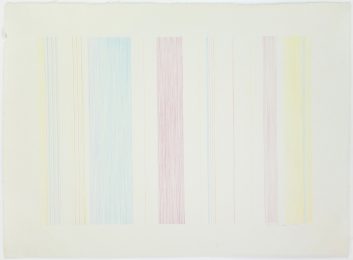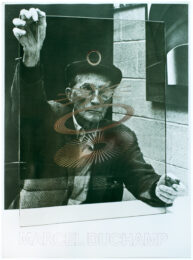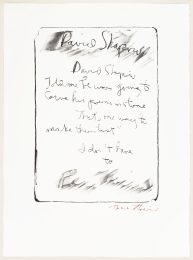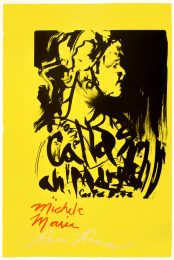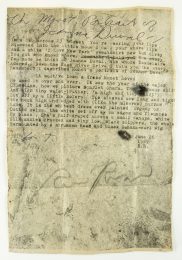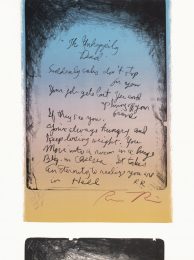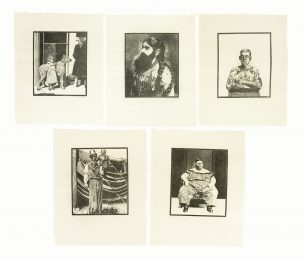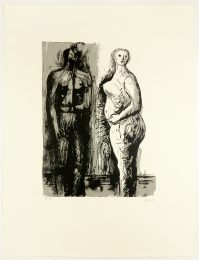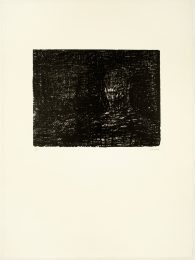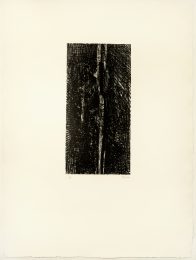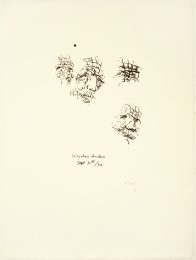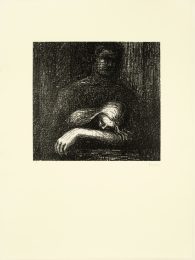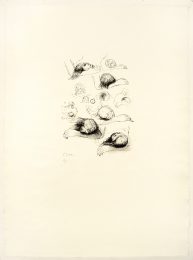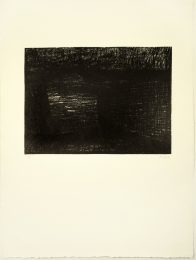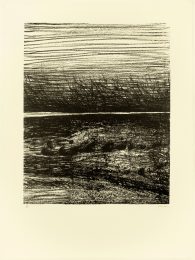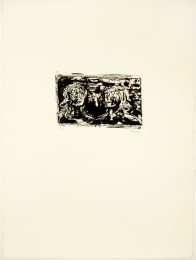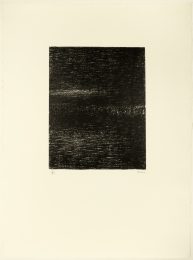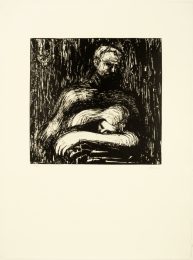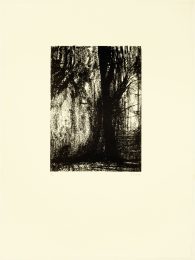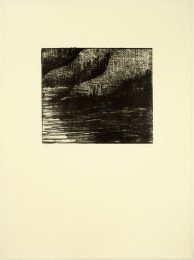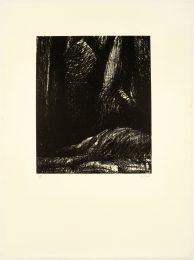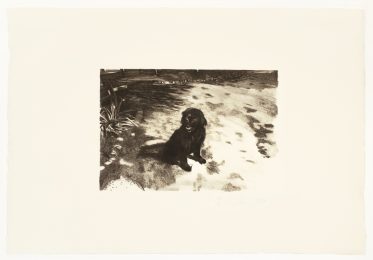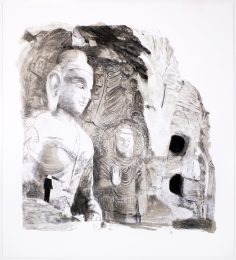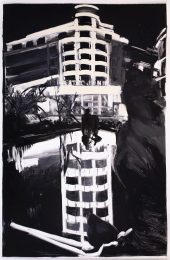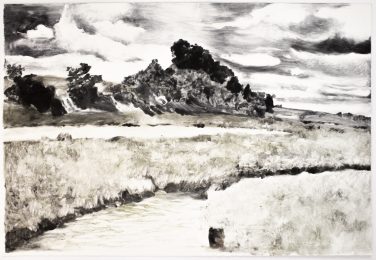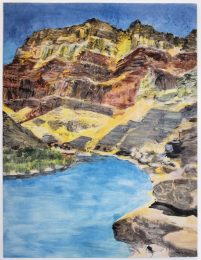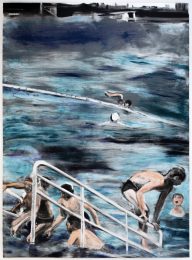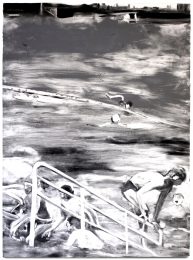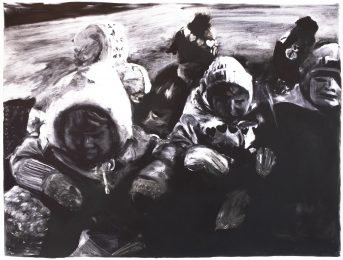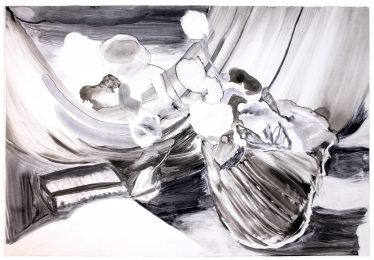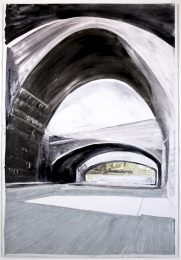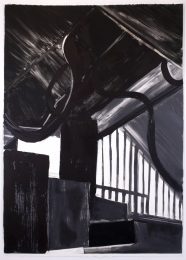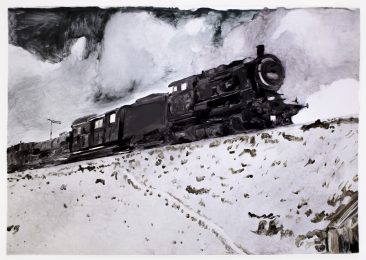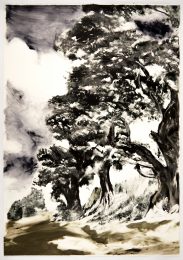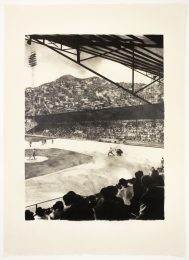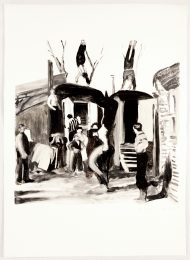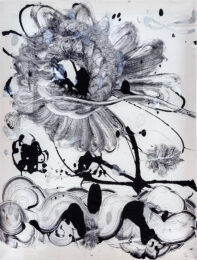Details — Click to read
Düsseldorf (German Cities), 1970
24 x 33.8 in. / 61 x 86 cm
Screen print in one color on offset lithograph, black on white card. “for Paul” written in pencil lower middle. Signed and dated 70 lower right. Titled on verso in pencil. Offset printed by Staib + Mayer, Stuttgart. Screen printed by Karl Löw, Stuttgart. Published by Edition Tangente, Heidelberg.
In pastel blue, Dieter Roth has reproduced a grid of five by five postcards of Düsseldorf. Over each postcard, the silhouette of a boat is printed in black and white. Düsseldorf is famed for their annual International Boat Show (in German, the Internationale Bootsausstellung Düsseldorf). The artist’s repurposing of printed tourist ephemera could be taken as a play on the intersection of nationalism, tourism, and the role of architecture and urban planning in shaping the notion of a country or a city. The gridded layout is characteristic of Roth’s work from the early 1970s when he was experimenting with tight, curvilinear and geometric forms in their physical environments. Often gridded and bisected by hatched lines, these works are reminiscent of architectural or topographic diagrams. Here the artist plays with repetition within a grid, binding each rectangular scene with a unifying color and the silhouette of the boat. In the grid of twenty-five images, its silhouette is purposefully misaligned, matching up only once.
Dieter Roth was a printmaker from childhood: his first etching at the age of 16 was scratched into a soda can, and despite the failure of the can to print anything but a shadow of ink, he continued his study and by 20 was a serious apprentice in lithography to a well-known commercial artist, Eugen Jordi. Later he would continue to print and publish much of his own work. From the 1960s onward, his collaborations with Petersburg Press brought him international recognition and produced some of his most celebrated work: Six Piccadillies (1970), and Containers (1972).
Interested in chance and spontaneity, Roth was drawn to make prints using unorthodox means: according to mathematical principles, using equations, or by randomly rearranging blocks before they were run through the press. The artist often printed plates repeatedly in different colors, producing many variations from just a few images. He used the printing press and materials to interrogate the creative process rather than just as tools to achieve an edition of identical prints: for example, overprinting or under-inking, or running objects through the press (in 1968, a box of chocolates). Roth was not just interested in the chance of making pictures but the unpredictability of decay: allowing the grease from slices of meat to slowly contaminate paper, immersing a print in vegetable juice, clamping metal to paper to produce rust, and pouring chocolate over a finished work.
Roth would make hundreds of print editions and books over his career and blurred the line between genres and mediums, embarking on prodigious collaborations and experimentation with music, poetry, art, and literary works.
Catalogue Reference: Roth 139
Condition: .25” tear left of lower edge, .5” tear lower middle edge. 1” discoloration left edge, wear upper right corner.
